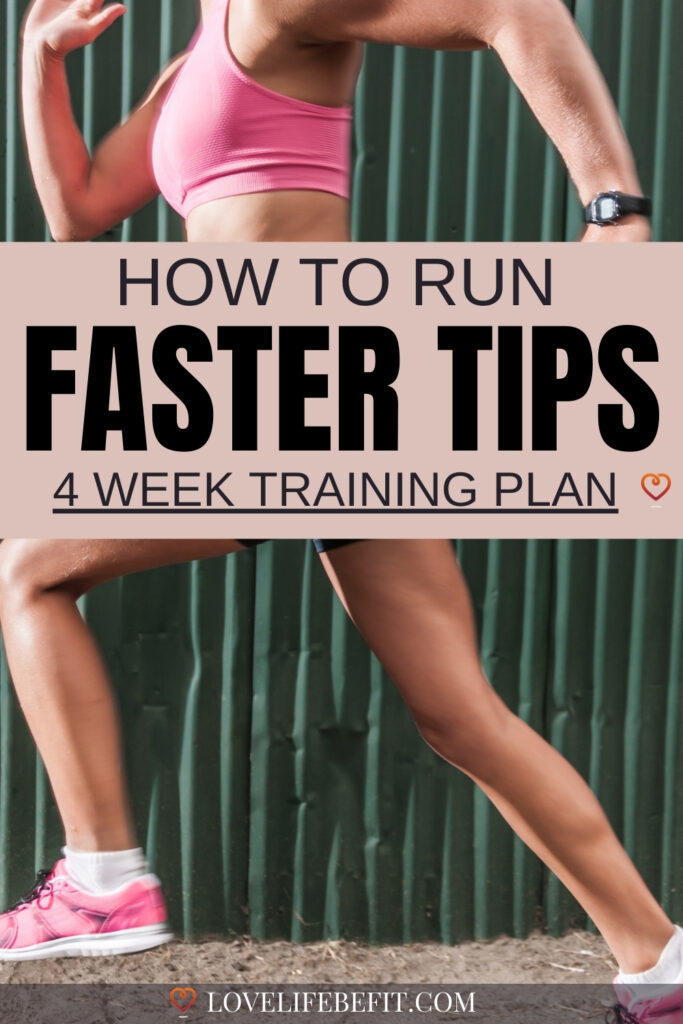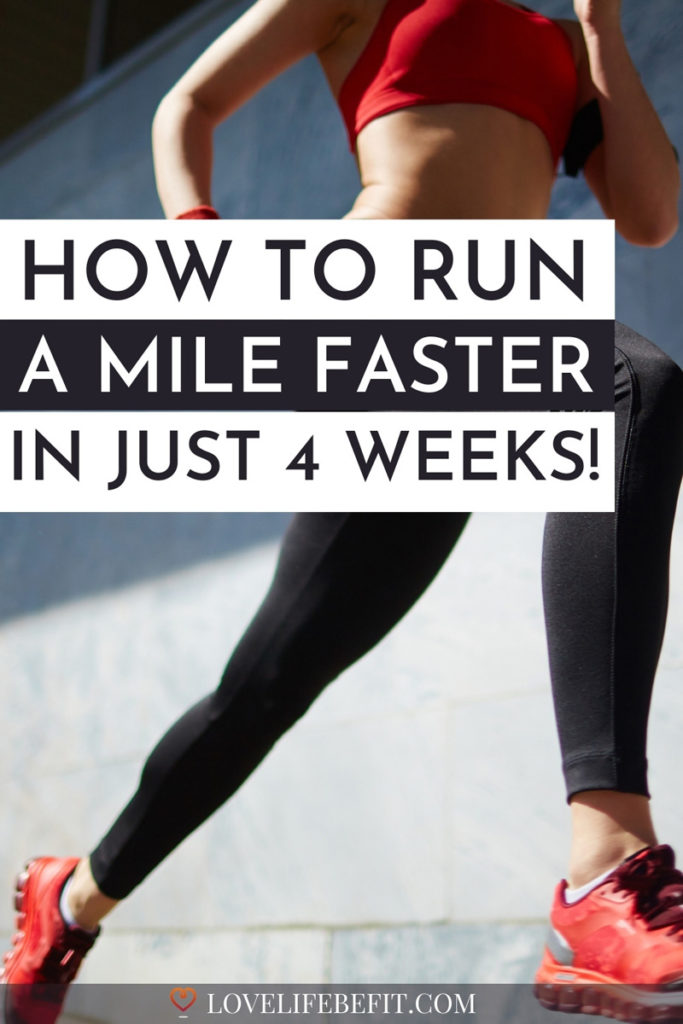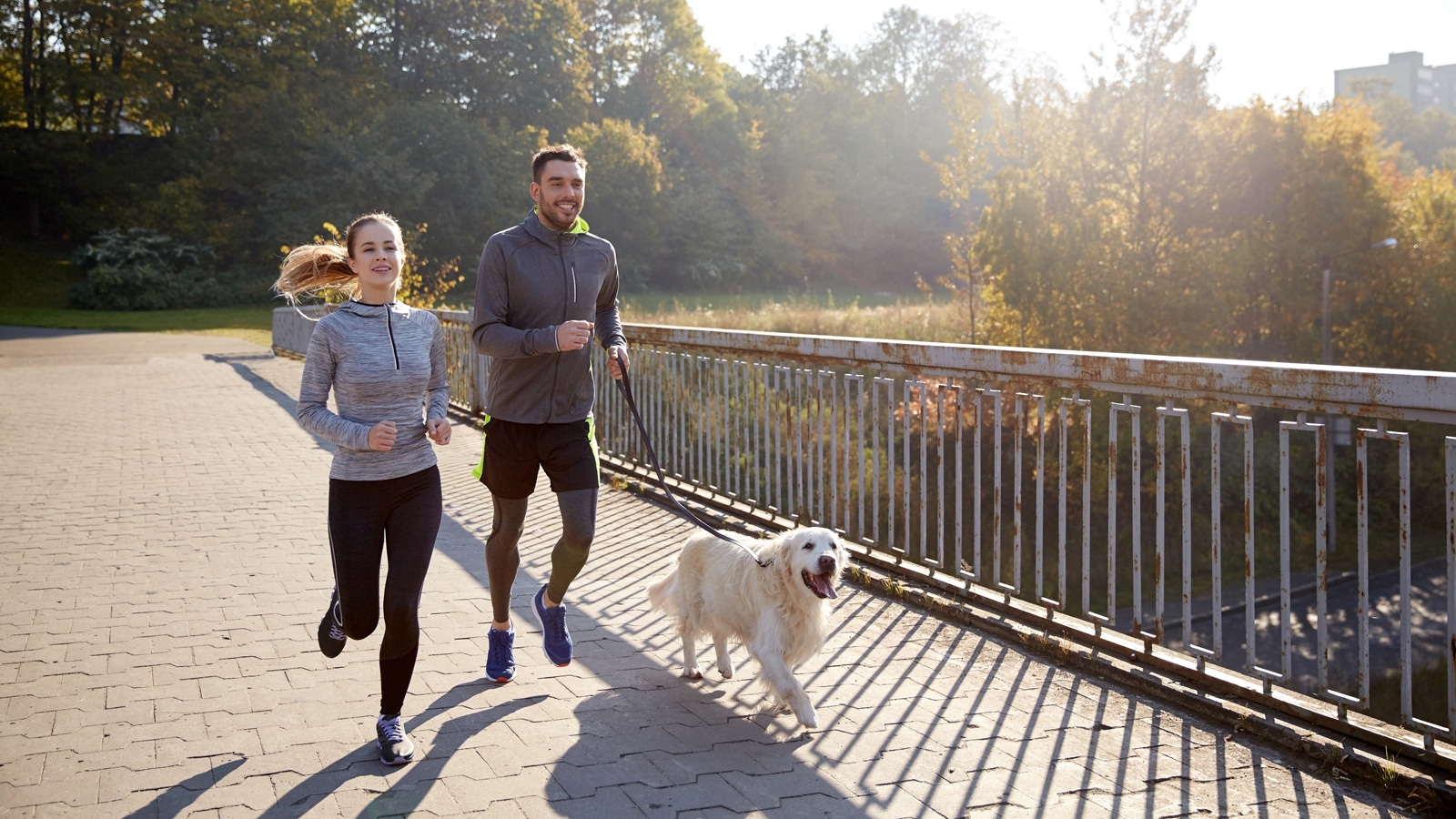How To Run A Mile Faster In Just 4 Weeks
Want to improve your mile time? It’s a good attitude. Knowing how to run a mile faster can make a big difference to your performance as a runner. Your mile time is relevant even if you’re a marathon or ultra-distance runner.
Why? Because if you can run a fast mile, any other pace seems easier. In my twenties, I ran a marathon in Hamburg without any specific training. My longest run in the 3 months before the event was about 10 miles. On paper, it should have been a disaster. In practice, I ran around the 26.2 miles in a very respectable 3:29.
How? I ran the marathon at an 8-minute mile pace. The pace felt really slow and easy. I even ran a perfect negative split marathon. Slightly over 8-minute mile pace for the first half and let rip on the second half at under 8-minute miles.
It was possible because my mile time was a whole lot faster. Longer distances at a slower pace seemed easy. It also helped that I was young!

How To Run A Mile Faster
To run a mile faster you need to train faster.
- Add interval sessions to your training such as 200 or 400m sessions run at mile pace or faster.
- Build strength with hill training.
- Improve your running form with drills and work on your cadence, (leg speed), by adding strides to your easy runs.
- Other factors are losing excess weight, strength exercises to avoid muscle imbalances, and competing regularly to up your game.
Improve Your Mile Time To Become A Stronger Runner
Many beginner runners shy away from trying to run fast. It’s easier to go further than work on increasing your pace. Running fast is hard! It hurts! But when you find the courage and determination to work on your speed, you’ll love the results.
Improving your mile time is a great way to build your strength and endurance as a runner. A faster running time improves your leg speed and economy. A stronger body is less injury-prone and being able to run faster makes running more enjoyable.
Whatever your reasons for running a fast mile, a nod to history and Roger Bannister with the first-ever four-minute mile or just to set a benchmark for your distance training, these tips will help.
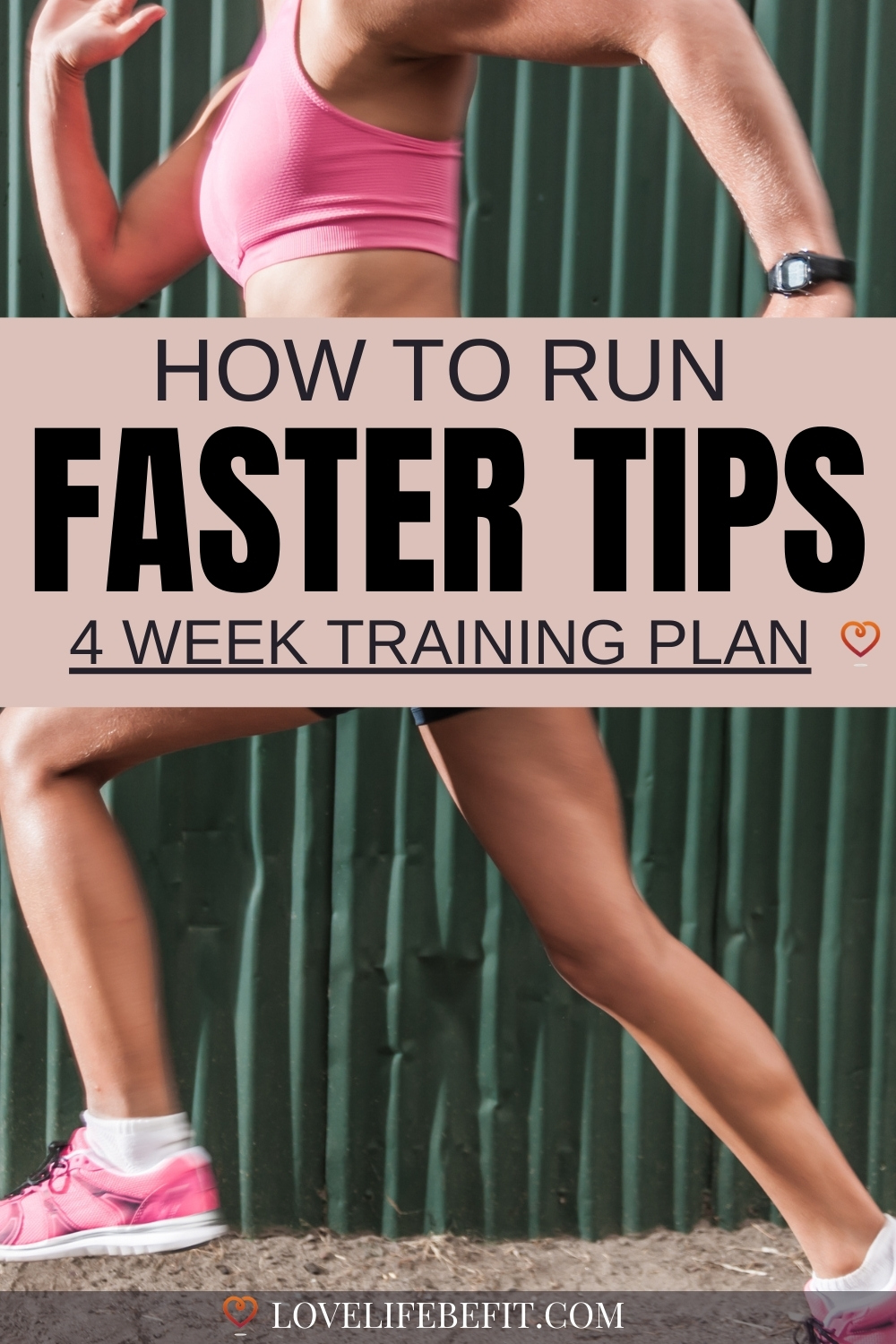
9 Tips To Run A Faster Mile
Running a faster mile depends on:
- your running economy – the energy it takes to maintain a pace,
- your VO2 max – the maximum rate of oxygen your body can use during exercise,
- and your aerobic endurance – the ability to continually do an activity without tiring.
All these elements need to be worked on to improve your mile pace.
#1 Build a good foundation
Aerobic endurance and running economy come from building a good base. If you’re new to running it’s best to spend 6 – 12 months laying the foundations with training plans geared around 5 or 10K races before working on your speed. Otherwise, you’re risking injury.
Gradually add tempo runs, longer runs, and easy intervals. Nothing too hard. These tips will help you find the right pace as a beginner runner.
For seasoned or long-distance runners, following a 5 or 10K training plan for around six to eight weeks is a good lead into training for a fast mile. When you’re building speed, 80% of your mileage should still be at an easy pace – a pace where you can hold a conversation.
#2 The need for speed
Speed training is more than just running intervals. Those intervals need to be short. We’re talking 200 and 400m interval sessions mixed up with even shorter bursts of speed. It can feel completely different to intervals for a standard marathon plan where you’re often running 800m intervals or even mile repeats.
To run a mile faster, you need to get those legs turning over faster. You’re embracing speed, building raw power, and learning to love it.
Add some sprint sessions to your training. Warm up properly with easy running and a few strides, then sprint for 8 – 10 seconds, repeating 4 to 5 times with a 3-minute recovery. Reduce the impact on your legs by doing these sessions on a softer surface.
Speed training hurts – big time. You will be outside of your comfort zone. But the satisfaction and euphoria you get from completing a session make it all worthwhile.
Try out some speed sessions in the “Run A Fast Mile 4-Week Training Plan” below. Your mile run time will start to drop.
#3 Increase your leg speed
To run fast you need to be able to maintain your leg speed. Your running cadence is the number of strides you take per minute. Having a high cadence helps with running faster.
Adding strides to your workouts is a good way to increase your cadence. Strides are short bursts of relaxed faster running. Add them at the end of an easy run or as part of your warm-up.
Strides should be effortless. Ease into your fast pace over the first 5 seconds. After 5 seconds, at your full speed, focus on staying relaxed – relaxed facial muscles, good arm action, and think about landing on your midfoot, not your heel.
Maintain until it feels natural to slow to a stop over the last 5 seconds. In total, your stride interval length should be about 20 to 30 seconds.
Recover fully for about 2 minutes before your next stride. Strides shouldn’t be hard. Unlike running intervals, you don’t want to be out of breath when you start your next stride. The focus is on your running form and fluidity.
#4 Improving your running form
I think you have to be careful about trying to improve your running form. It’s easy to overthink it and negatively impact your natural gait. You can read more about proper form in this post:
The key to good form is strength, speed, and a good range of movement in your hip flexors. Adding running drills as part of your warm-up can help.
Popular drills include high knees, butt kicks, and carioca drills. Jason Fitzgerald demonstrates them in this video:
You can read more about the benefit of running drills here.
#5 Learn to love hills, (and stairs)
Fast runners are strong runners and one of the best ways of building strength is by running up hills. If you can push yourself running up a steep hill, you’ll be able to run faster on the flat. It’s a favorite speed workout.
You can run hill repeats on a treadmill by setting an incline, but getting outside is much better. Find a quiet road with little traffic or a relatively smooth trail. It can be any length but 100m to 200m is ideal for a hill interval when you’re trying to run a faster mile.
How to run hill repeats:
- Warm-up properly first with dynamic stretches followed by an easy run for at least 10-15 minutes.
- Start at the bottom of the hill and run hard. Aim for the maximum pace you can manage without losing form. Keep a tight core, drive your knees and swing your arms slightly. Focus 3 to 6m ahead.
- At the top of the hill, (or after 100 to 200m), turn around and jog or walk back down the hill slowly. Allow your breathing and heart rate to recover before repeating the process.
- Aim for 2 – 3 repeats if it’s your first hill session. Try and add a hill session every week to your training plan, gradually increasing the number of repeats.
If you live in the flatlands, finding a long flight of stairs is a good alternative!
#6 Check your weight (and maybe lose some)
You don’t need to be around runners very long before the topic turns to weight. We all know body weight is a factor in running performance but its importance is over-emphasized.
If you have an unhealthy BMI then certainly losing a few pounds will help you run faster. But for everyone in the healthy zone, please read this article about Allie Kieffer before even thinking about losing weight. It can be a road to misery and injury.
Sadly, you only need to stand alongside the elite starting pen at a marathon to realize some of the top female runners are verging on anorexic. Being underweight isn’t something I encourage. I’ve had friends who’ve crossed over from light and fast into anorexic and lacking the strength to run more than a mile or two.
But if you’re like me and enjoy your food, those excess pounds can add up over the years. Shedding them will help you run faster and adopting healthy eating could be all it takes to trim your waistline. Find out more in this post:
#7 Add strength training
To flow over the ground at speed, your body needs to be strong. Add bodyweight strengthening exercises into your routine to ensure a strong core, avoid muscle imbalances, and target all the major muscle groups. Don’t just focus on your lower body; you need strength in your upper body to maintain your running form.
Yoga for runners is also terrific for building strength and avoiding muscle imbalances. Find out why you need yoga in your life with this post:
#8 Find some competition
When you want to run fast, I’m a strong believer in the need for competition. It could be from your training partners, turning out for your club for relays and cross-country races, taking part in Parkruns, or entering other 5K races.
It’s the competition that makes you dig deeper and try harder – focusing the mind, getting used to the pain, and helping your body shift up a gear.
#9 Rest and recover
Those hard sessions – intervals and hill repeats – can really take it out of you. Make sure you take sufficient time to rest and recover.
Follow hard training days with days of easy recovery runs and build proper rest days into your schedule. Try cross-training to give your body a rest from running and build all-over fitness. Remember that when it comes to running faster, you’re aiming for quality training over quantity.
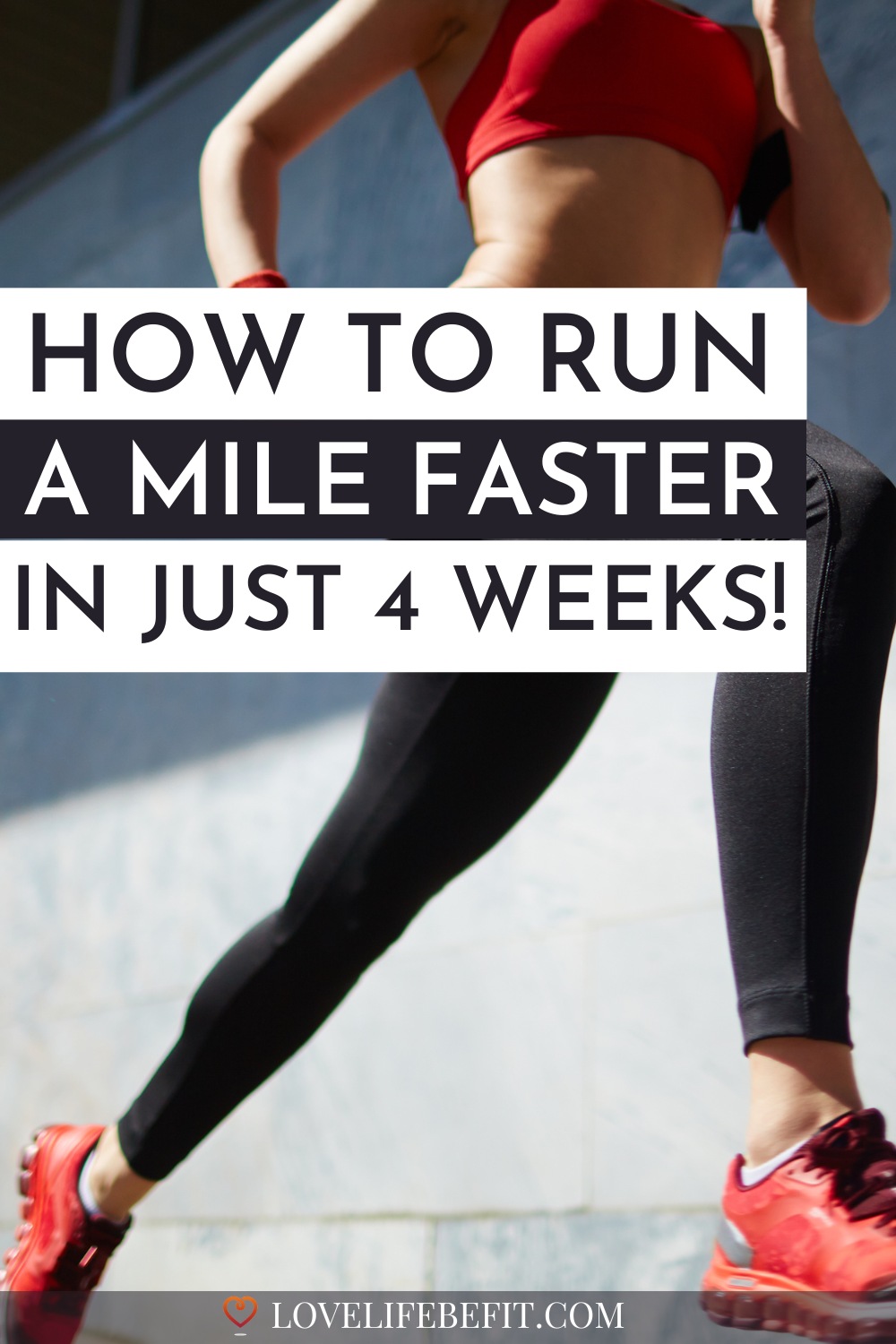
Run A Fast Mile 4 Week Training Plan
The exact training plan will depend on your running background and the typical mileage you’re already running. For the next 4-weeks, you’re going to focus on speed and running your fastest mile. It’s not a good time to be adding extra mileage or extending the distance on your weekly long run.
You want to be running 4 to 6 times per week, with all runs at an easy pace outside of your strides and interval training workouts. This plan is based on running 20-25 miles a week but you can scale the easy runs up or down depending on your current level.
Before launching into the training plan, find your starting point. Warm up, then go out and run a mile time trial at race pace. Most people have never run a mile race and this will give you a personal record to beat.
Week 1
- Day 1: 4 miles easy include 6 x 20-30 seconds strides, recovering fully for 2 minutes between strides. Run strides on grass or level trail. Run to feel rather than checking your watch. Concentrate on form and flow.
- Day 2: 2 miles easy, then 5 x 300m at mile pace with 90 seconds recovery (slow jog or walk) on grass or level trail. Avoid checking your pace as your run. 2 miles easy cool-down.
- Day 3: Rest and recover. Try cross-training – go for an easy bike ride or do some gentle yoga.
- Day 4: 4 miles fartlek (easy running with bursts of speed on trails).
- Day 5: 4 miles easy including 6 x 20-30 seconds strides with 2-minute recovery on grass or trail.
- Day 6: Rest and recovery.
- Day 7: 5 miles easy.
Week 2
- Day 1: 4 miles easy including 6 x 20-30 seconds strides with 2-minute recovery on grass or trail.
- Day 2: 2 miles easy, then 8 x 200m at faster than mile pace with 2-minute recovery (slow jog or walk) on grass or level trail. 2 miles easy cool-down.
- Day 3: Rest and recover.
- Day 4: 4 miles easy.
- Day 5: 2 miles easy, then 2-4 hill repeats. 2 miles easy cool-down.
- Day 6: Rest and recovery.
- Day 7: 4 miles easy.
Week 3
- Day 1: 4 miles easy including 6 x 20-30 seconds strides with 2-minute recovery on grass or trail.
- Day 2: 2 miles easy, then 4 x 400m at mile pace with 40 seconds recovery. 2 miles easy cool-down.
- Day 3: Rest and recover.
- Day 4: 4 miles easy.
- Day 5: 2 miles easy, then 2-5 hill repeats. 2 miles easy cool-down.
- Day 6: Rest and recovery.
- Day 7: 4 miles easy.
Week 4
- Day 1: 4 miles easy including 6 x 20-30 seconds strides with 2-minute recovery on grass or trail.
- Day 2: 2 miles easy, then 8 x 1 minute at mile pace with 1-minute recovery followed by 6 x 30 seconds at faster than mile pace with 2-minute recovery. Grass or level trail. 2 miles easy cool-down.
- Day 3: 2 miles easy including 6 x 20-30 seconds strides with 2-minute recovery on grass or trail.
- Day 4: Rest and recovery
- Day 5: 2 miles easy. 4 x 30 seconds at mile effort/2 minutes recovery. 2 miles cool-down.
- Day 6: RACE DAY

